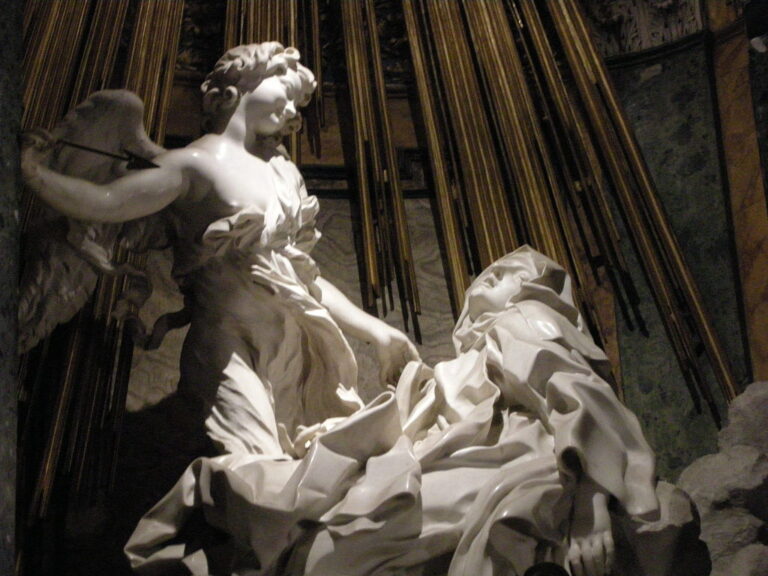15 June 2024
Saint Teresa of Avila, Part 3 | The Year of Prayer
By Joey Belleza, PhD (Cantab.)
Proceeding along in our focus on St Teresa of Avila, we come to her third stage of prayer, which she likens to watering a garden from a river or spring. Unlike the first two stages—drawing from a well and using a water mill—in this stage, the difficulty is taken away almost completely, since a natural source of water supplies the garden by its own power. Here, the faculties of intellect and will are almost in complete harmony and union with God, receiving his consolation in greater measure while expending little effort. The soul reaches a level of humility surpassing that gained in the Prayer of Quiet, for “it sees clearly that it has done nothing at all of itself save to consent that the Lord shall grant it favours and to receive them with its will” (The Life of Teresa, ch. 17).
This third stage of prayer corresponds to the fifth of the seven mansions described by Teresa in The Interior Castle. The fifth mansion, marked by the “prayer of simple union,” is marked by the realization that a greater peace is bestowed when the soul no longer competes against God, but comes to work in cooperation with God, even if the soul does not understand the full extent and measure of God’s wisdom and love. In The Life of Teresa, this means that the memory and imagination remain free but operate in conjunction with God’s goodness, such that the mind continues to work toward contemplation of God throughout the experiences of life. Whereas in the previous stage, the soul rests in the “holy repose which belongs to Mary [of Bethany],” in the third stage this holy repose “can also be that of Martha” (The Life of Teresa, ch. 17). The active life is brought up into the contemplative life, and the synthesis of these two states represents a true flowering of the garden. “Already the flowers are opening: they are beginning to send out their fragrance” (The Life of Teresa, ch. 16).
Notice that, for Teresa, an increasing mystical union with God does not mean forgetting one’s place in the world in a flight from everyday existence, but in a virtuous growth that allows one to live well, no matter one’s state of life. Fortified by the life of prayer, the virtues are made incarnate in our own daily deeds, and the mind does not cease contemplating the things of God through the works of creation. In this mystical union, “the soul realizes that the will is captive and rejoicing, and that it alone is experiencing great quiet, while, on the other hand, the intellect and the memory as so free that they can attend to business and do works of charity” (The Life of Teresa, ch. 17). This description corresponds to the sixth mansion in The Interior Castle, wherein the gift of heavenly contemplation given to Teresa is poured forth and continues during her daily labours and tasks in the monastery.
In this Year of Prayer, let us consider what Teresa teaches us in this third stage. The mystic’s ascent to God through prayer involves the concretization of the life of virtue. Mysticism is not merely a heightened sense of self-awareness, nor an abstract emotional or affective state, nor elevation into a state of rapture alone. Instead, the life of prayer, fed directly by streams of living water flowing from the side of Christ, brings forth its flowers and fruit in the Spiritual and Corporal Works of Mercy. By doing so, we follow Christ’s own synthesis of the Law and Prophets, expressed in his two great commandments: to love God above all, and to love our neighbours as ourselves.

